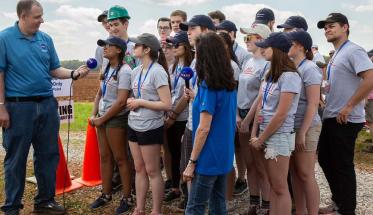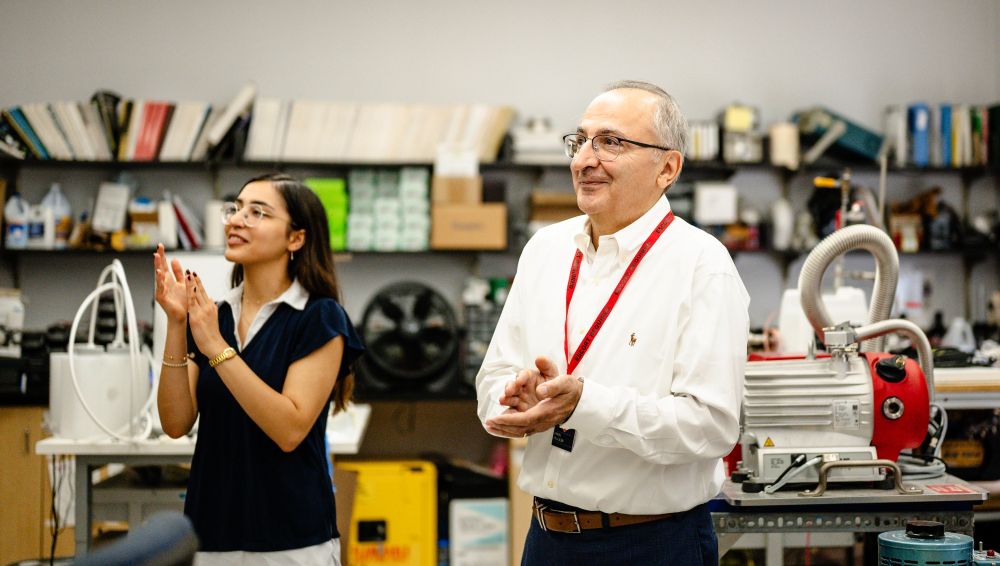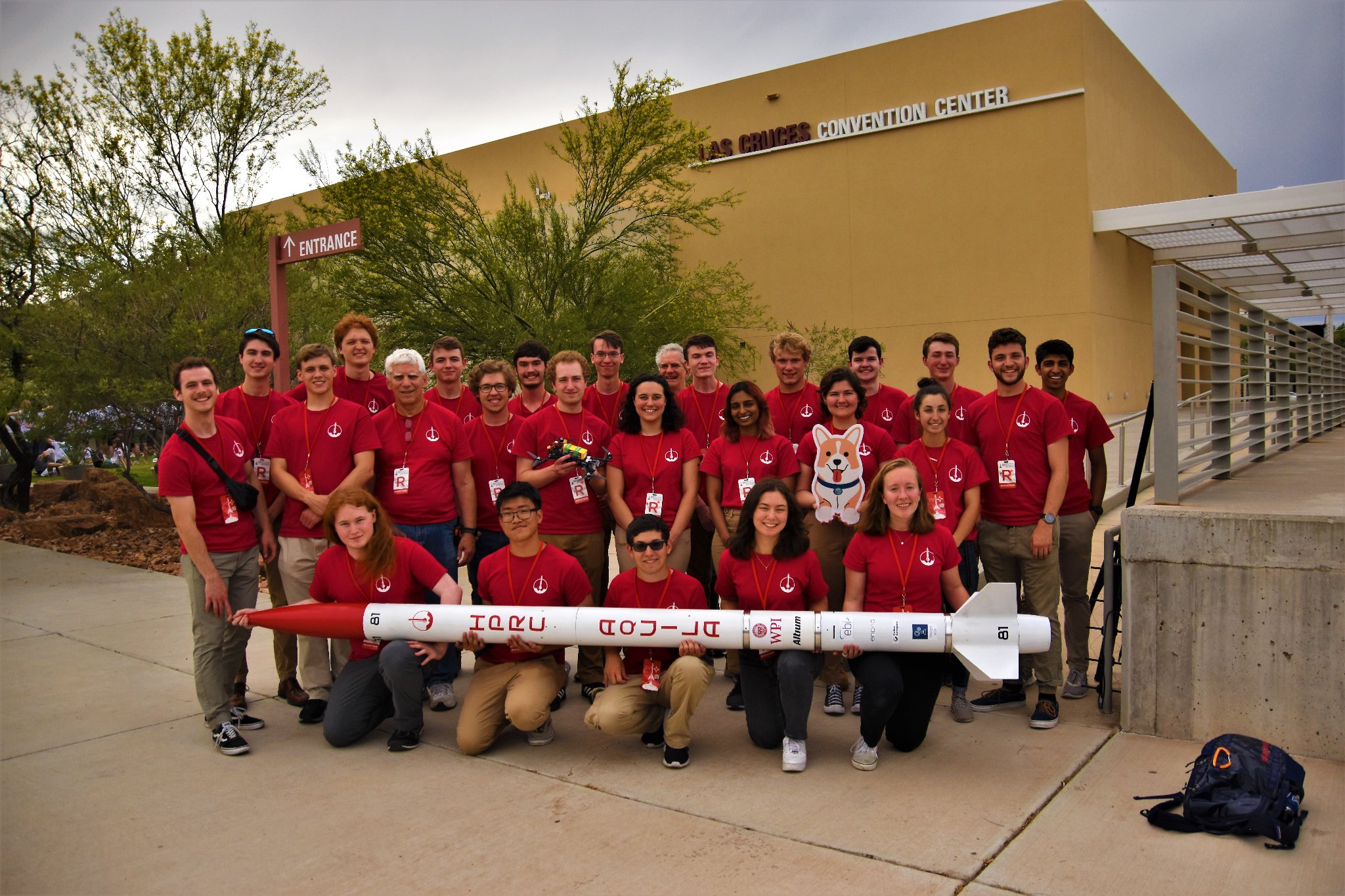Over the past year, nearly two dozen WPI students designed and built a rocket and payload, with 18 of them going on as a team to enter NASA’s University Student Launch Initiative in Huntsville, Ala. During their experience they learned valuable lessons in rocket and payload engineering, leadership and teamwork, and also got used to meeting deadlines and writing precise NASA-style project review reports.
As freshmen during the 2017-18 academic year, aerospace engineering students Caroline Kuhnle ‘21 and Krystina Waters ’21 learned of NASA’s University Student Launch Initiative, a nationwide competition in which student teams build rockets to precise specifications and launch them at the Marshall Space Flight Center in Huntsville.
For the two women, both lifelong space and rocket enthusiasts, the fuse was lit.
They began a nearly year-long journey that drew in 21 other students—including their colleague and friend Christian “Max” Schrader ‘21—and aerospace engineering professor John Blandino, culminating in Huntsville in April.
The first WPI team to enter the initiative passed a series of milestones to qualify for the competition, designed and built their rocket with its payload, and then launched it. During the process, they had to complete design, flight readiness, and post-launch reviews under NASA guidelines that mirror those required for the agency’s complex aerospace systems.
Student-driven project
“This really was a student-driven project from the beginning,” says Blandino, the project advisor. “When I became involved in mid-October of 2018, the project was already under way. Caroline and Krystina were responsible for organizing a team, preparing the initial project proposal to NASA, finding a space to work on the rocket, and making sure all the milestones were met.”
The WPI team, nicknamed G.O.A.T.S (Get Our Apogee to Space)—with a nod to the university’s mascot, Gompei—didn’t win the competition. In fact, as their rocket roared skyward, the engine that the students purchased from a vendor malfunctioned and exploded, and the damaged craft drifted back to earth under its parachute.
But the students and their professor say that the lessons learned have proven invaluable, expanding their knowledge of high-powered rocketry, and providing good preparation for their working lives after WPI.
"These are typical of real-world programs, and having to prepare and deliver these gave the students a taste for the deadline-induced stress and required attention to detail they will encounter in their careers." -- John Blandino




